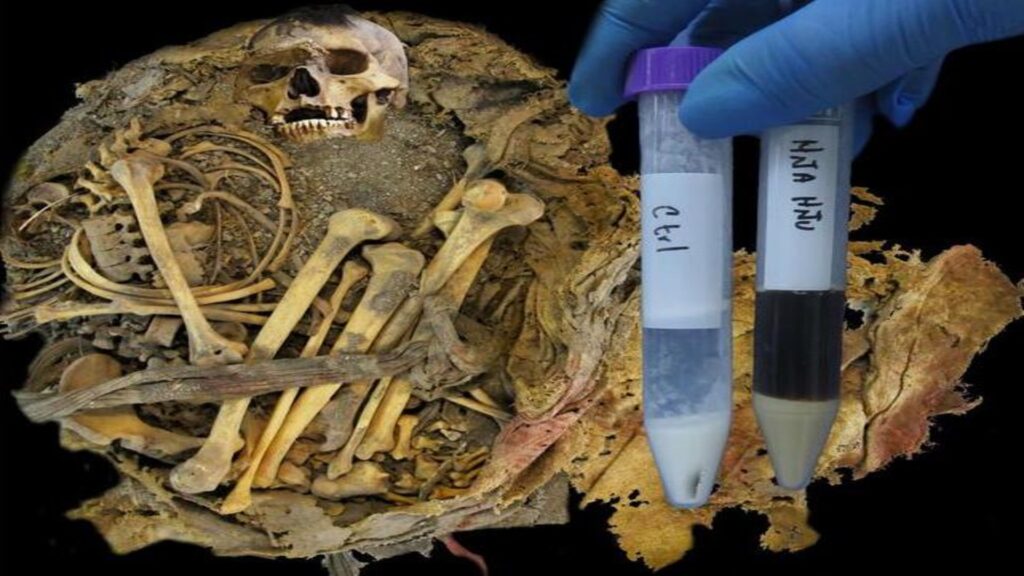
Researchers have uncovered remarkably well-preserved remains of a 1,000-year-old individual in a cave in central Mexico, revealing new insights into the ancient human gut microbiome. Known as the “Zimapán man,” this individual was discovered in a natural mummification process facilitated by the cave’s unique conditions. The findings, published in the journal PLOS One, provide a significant glimpse into the life and health of a member of the Otopame culture, an extinct group of hunter-gatherers.
The remains were found in 2014 by residents of El Saucillo in the Zimapán region, situated at the boundary of Mesoamerica and Aridoamerica. Wrapped in an intricate funerary bundle, the individual likely held a prominent social position within his community. The study reveals that his intestinal tissue and preserved feces offer a detailed portrait of his microbiome, showcasing various bacterial families that have long-standing relationships with humans.
Insights into Ancient Microbiomes
Led by Santiago Rosas-Plaza from the National Autonomous University of Mexico, the research team employed standard analytical methods to examine the remains. They identified the individual, named Hna Hnu, as a male who died between the ages of 21 and 35. His burial was notable, involving layers of maguey fiber mats and woven cotton, indicating his significance in society.
As the researchers applied 16S rRNA gene sequencing to his mummified intestinal tissue and fecal samples, they discovered several families of bacteria, including Peptostreptococcaceae, Enterobacteriaceae, and Enterococcaceae. These findings illustrate the complexity of ancient human microbiomes and suggest that some of these bacterial families have coexisted with humans for millennia.
Notably, the presence of bacteria from the Clostridiaceae family has been documented in other ancient mummies from Andean civilizations, linking the Zimapán man to a broader cultural context. Most strikingly, the identification of Romboutsia hominis marks the first time this bacterium has appeared in ancient microbiome studies, representing a significant advancement in understanding microbial evolution.
Preservation Techniques and Cultural Significance
The study emphasizes the integration of anthropological, archaeological, and microbiome data as a powerful means to unravel human evolutionary history and its intricate connections to biological and social environments. The research team posits that the Zimapán paleofeces may preserve authentic ancient gut bacteria, offering a unique opportunity to study dietary practices and health in ancient times.
The exceptional preservation state of the Zimapán man’s remains underscores the advanced techniques employed by his culture. The research team noted the complex arrangement of the burial fabric, stating, “The mathematical composition of the knots within the fabric was peculiar and intricate.”
For nearly eight years, Master Luisa Mainauo has been dedicated to the restoration of the mortuary bundle, aiming to present this significant cultural artifact to both Mexican citizens and the global community. The findings not only enrich the narrative of ancient Mesoamerican societies but also highlight the importance of preserving and understanding cultural heritage through scientific inquiry.
The full study can be accessed in PLOS One, offering a comprehensive view of the research and its implications for the understanding of ancient human life.







